It’s smart to set smart goals! And smart goals for healthy eating are no exception. Setting smart goals is a great way to achieve your desired intentions and improve your life. This article will teach you the components of a smart goal, provide examples, and give you some tips on how to make them work for you. You’ll also be able to download our free smart goal template with a tracker sheet so that you can start setting smart goals today!
*This article contains affiliate links. We may earn a small percentage of sales from purchases using these links. Thank you for your support!
Table of Contents
What is a SMART goal?
A SMART goal is an acronym for Specific, Measurable, Attainable, Relevant, and Time-bound.
In order to set a smart goal for healthy eating, you’ll want to make sure that each of these five components are included.
Specific
Your specific goal should be something that you can visualize and clearly define. It’s important to be precise when setting this type of goal.
For example, “I want to eat healthier” is not specific enough because there are too many ways to interpret what that means.
Instead, start with “I will eat three servings of vegetables.” This is a more specific and measurable goal.
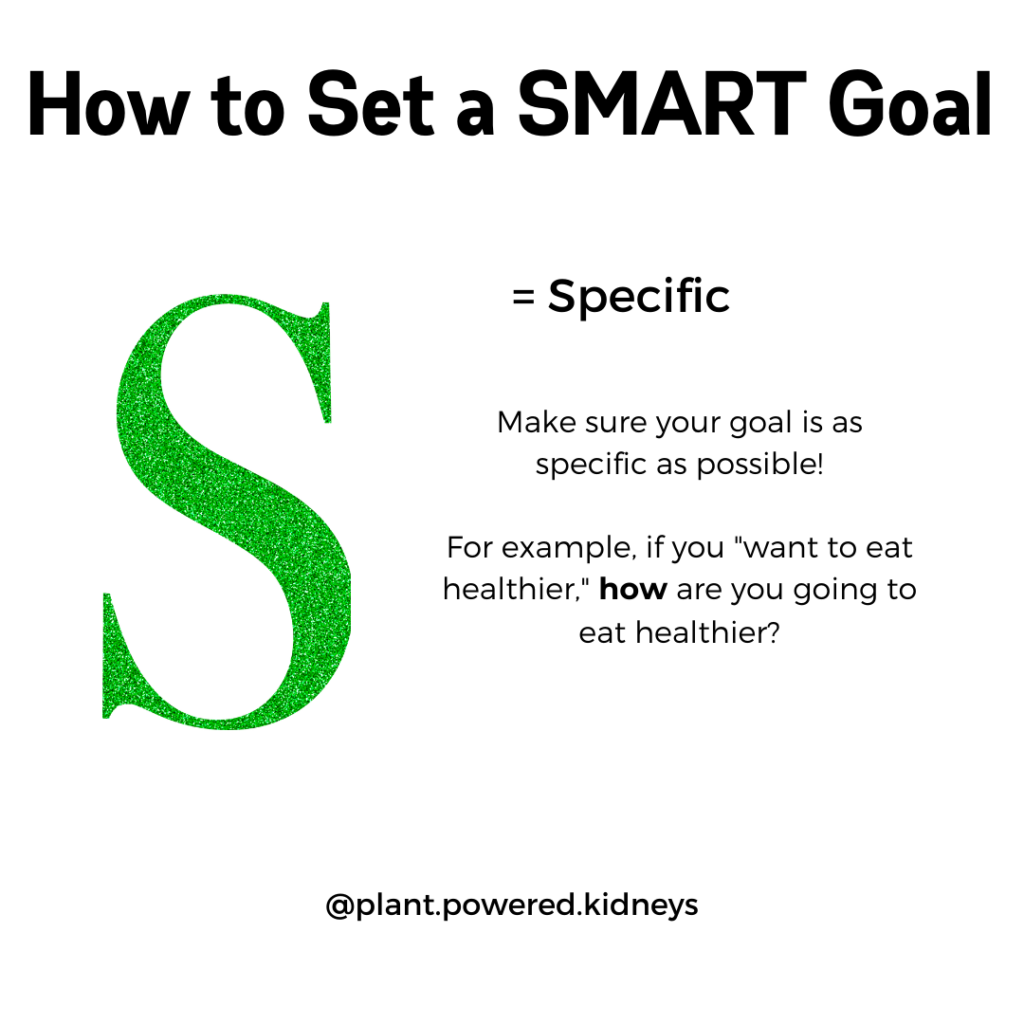
Measurable
The second step of a SMART goal is to make it Measurable. Provide a way to track and evaluate your progress so you can see your results.
For example, “I will eat three servings of vegetables at least four days each week.”
This statement is more specific and can be measured because you know exactly how many veggies are in a serving.
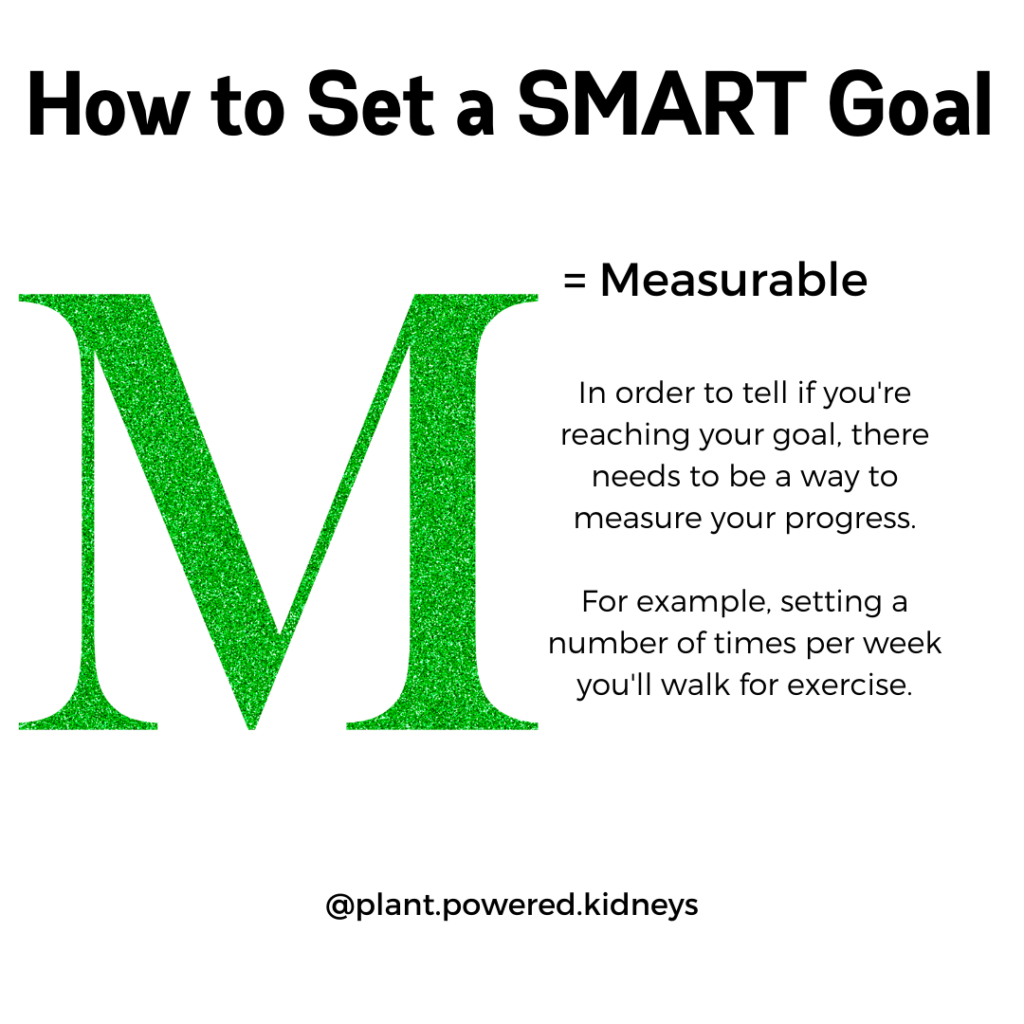
Attainable
It’s smart to set smart goals that you feel confident achieving.
If your goal seems too lofty or unrealistic then it might not motivate you enough to push through the hard times when things get tough; whereas smaller, more realistic goals allow for incremental growth over time.
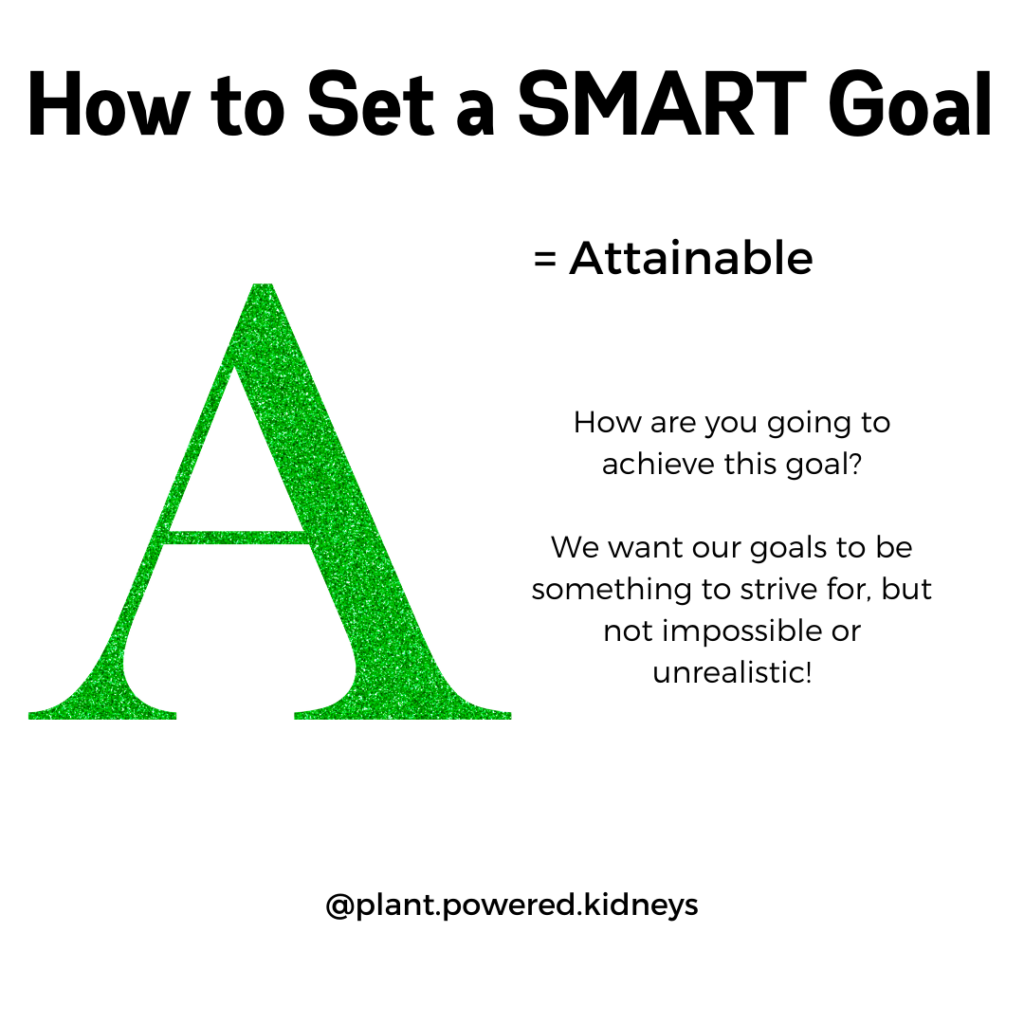
For example, maybe your current diet consists mostly of fast food like burgers and fries with sodas on the side (definitely not smart).
Setting a smart goal for healthy eating such as, “I will only eat salads” would probably make this seem even less attainable than setting an overall healthier eating goal.
So instead, you could set a smart goal like, “I will eat one serving of vegetables in at least one dinner this week.”
While this may feel like it won’t do anything, think again. When starting to set smart goals, especially smart goals for healthy eating, an attainable goal will set you on a strong path forward.
You’ll feel more motivated to continue your streak and set more goals!
Relevant
Your smart goal should be relevant to your life.
These personal values are important because they help us determine what’s most meaningful and relevant to our lives which essentially drives the success or failure of achieving a smart goal.
For smart goals for healthy eating, think about what you personally value.
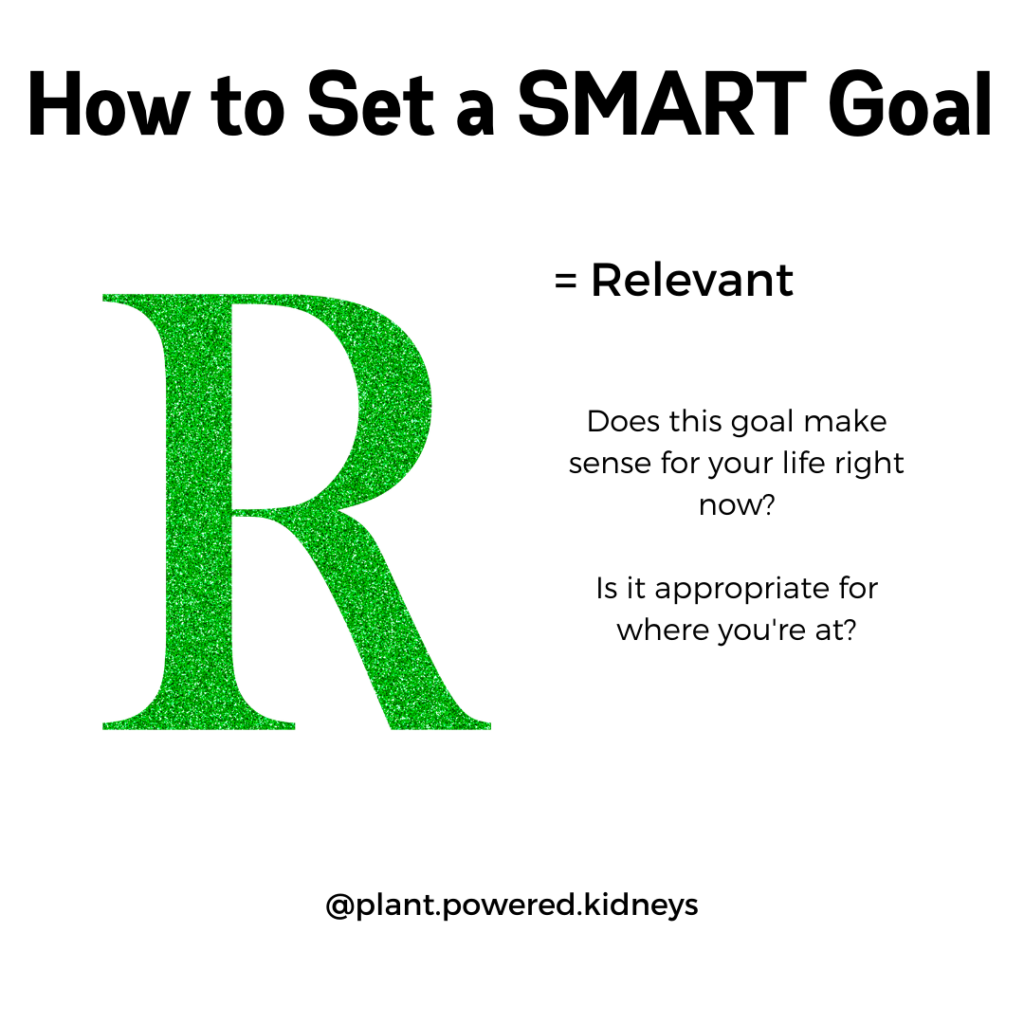
For example, you may be juggling a few health conditions, like high blood pressure and diabetes.
There may be one condition that is having a bigger impact on you in a variety of ways – taking up more of your time, your worry and stress, or more money for medications and healthcare expenses.
Reflect on the goal you’re setting to determine how relevant it is towards where you are in your life. This may also help further shape your goal into a smart goal by being very specific!
Time-bound
Finally, after defining these first four components it’s smart to establish a deadline so there’s some urgency involved in reaching this outcome.
For smart goals for healthy eating, try to set a target date that is not too far away, but also doesn’t leave enough time to solidify the new habit. This helps you stay on track and keeps your smart goal relevant!
Many healthy eating goals will require anywhere from 3-12 weeks.
Set a time that you feel confident about. Make sure you are fair with your expectations, however, having a firm deadline will help to keep you motivated.
The point of making a smart goal time-bound is to evaluate the results at the end and set a new goal.
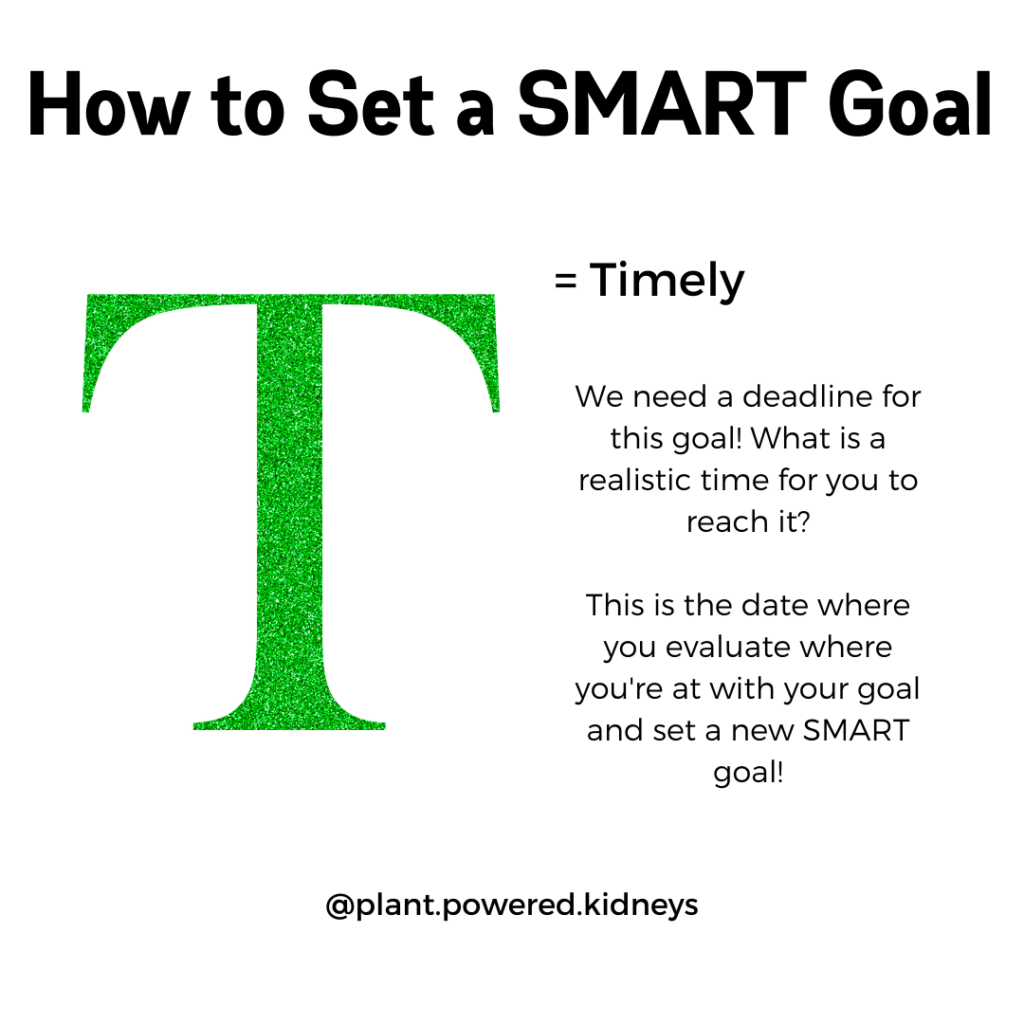
Requirements for Healthy Eating Goals
There are certain things to include in a SMART goal focused on healthy eating. A goal like this requires at least these two parts:
1) A detailed plan to get through it (i.e. meal planning and cooking)
2) An exit strategy (i.e. what is a realistic frequency for dining out or grabbing something when you’re out and about?)
As mentioned, when a SMART goal includes eliminating or avoiding something, it’s a very smart thing to include within the goal what you’ll do instead.
The action item isn’t just to avoid something- it’s to replace it with a healthier habit.
This SMART goal is…
- specific because the action is detailed (what is being avoided and what is replacing that)
- measurable because we can count the number of meals that will be packed
- attainable because this is a short amount of time
- relevant because this person finds they’re eating out too much (maybe their wallet is running on fumes!)
- time-bound because it’s set for the next work week
After this SMART goal was completed, it may be a better idea (read: attainable) to try something like this.
I will pack three of my lunches for this week.
It doesn’t sound glamorous for a healthy eating plan, does it? But what it does do is create a SMART goal that feels more attainable in the long run.
The point of setting SMART goals for healthy eating is to make them sustainable for life. These are goals that will stack, one on the other, as you continue to set and plan out more goals.
But this goal hits all of our SMART goal requirements, which is a win.
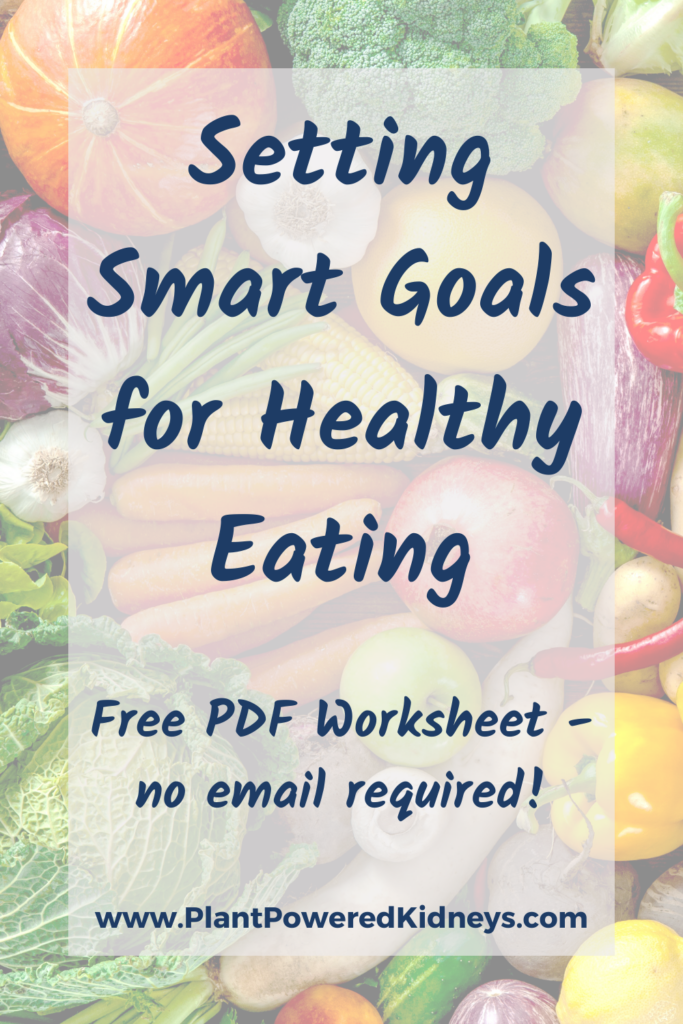
Examples of Smart Goals for Healthy Eating
Now that we know all about smart goals and how to set them, let’s take a look at some examples of smart goals for healthy eating.
Remember, these are just general ideas to help get you started!
You’ll want to personalize each goal according to your own situation and values.
Adding more vegetables to your diet
I will eat two vegetables with dinner for four days each week for the next four weeks.
Is it a SMART goal?
It’s specific because the action is addressed. The action is to eat vegetables.
It is measurable because the servings of vegetables can be measured out or identified.
The goal is attainable, primarily because it’s not set for every day or every meal (how many times have you slipped just to say, oh well, I’ll start again on Monday)?
It’s relevant if the person has wanted to eat better and has already identified their diet is lacking in vegetables (and maybe fiber).
Finally, it’s time-bound for the next four weeks. At that point, the goal will be evaluated!
Drinking more water
I will swap out my lunchtime 12-oz can of soda for a 16-oz water bottle or unsweetened iced tea for the next three days.
Is it a SMART goal? Let’s check.
It’s specific because the action is addressed. The action is to eat replace sodas with a different drink that doesn’t have added sugar. Not only that- this goal is specific to a habit of drinking sodas at lunch!
It is measurable because we know the number of times soda is being replaced.
The goal is attainable because it’s a shorter length of time and not forever. Something that can be planned for in advance!
It’s relevant if the person has been told to cut back on sugar because of diabetes, for example.
Finally, it’s time-bound for the next three days. At that point, the goal will be evaluated. This is a shorter goal, which means it can help set up the next goal to be longer.
Maybe the next will be to continue the pattern for one week!
**Pro-tip! Whenever you want to set a smart goal for healthy eating that has to do with eliminating something (in this case removing soda), it can be incredibly helpful to write out what you’ll do instead! If you just cut the soda out, what would you reach for during your meal? Plan it out!
Reduce fast food
I will avoid fast food for the next five days by packing my lunches for work.
Before we dive into this one, there’s something really important about a goal like this.
Life happens.
So if you are to work on cutting out fast food, it’s important to understand that it is not an attainable goal to never have fast food again.
That’s why we have an article all about fast food that’s okay for kidney disease.
Free SMART Goals Worksheet
Download our free smart goals worksheet to help you set and track your own smart goals for healthy eating!
This PDF worksheet was created by registered dietitian Jen Hernandez RDN, CSR, LDN, to help you set up and accomplish your next SMART goal for healthy eating.
Click here to get your free SMART Goals PDF Worksheet – no email required!
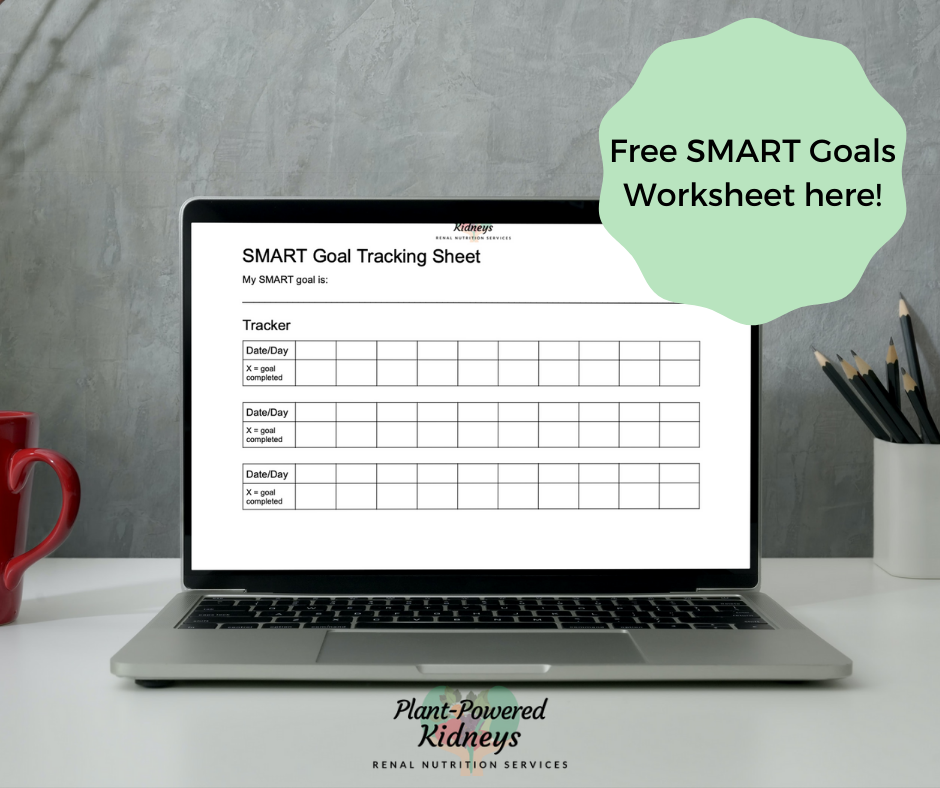
Resources to Help
Besides our free SMART Goals Planner and tracker above, there are a couple of other resources we can’t not mention.
Best Self Journal
This is a planner, journal, goal tracker all in one! I personally start every morning with this journal to help me continue to see how I’m doing on my goals.
This planner has helped me become consistent with my exercise routines and my daily supplements*. It is also a great gift if you know someone that wants help and support on their own goals!
Atomic Habits for Motivation
One of my all-time top recommended books when it comes to setting goals and changing habits is Atomic Habits by James Clear. This is a phenomenal book that discussed the impact of making the smallest changes to get the biggest results.
Summary
In this blog post, we outlined smart goals for healthy eating and gave examples of what they could look like. We also provided a free smart goal worksheet to help you set your own goals!
Remember that when setting a smart goal for healthy eating, it’s important to include all the necessary components: specific, measurable, attainable, relevant, and time-bound.
It’s also smart to include an exit strategy and plan for what you’ll do if your goal includes avoiding or reducing a certain habit.
If we want to eat healthily, lose weight, or, we need smart ways to achieve them!
What’s your SMART goal for healthy eating? Share it below in the comments!



Thanks very much for such helpful advice. I am trying to read labels in order to decide if eating half a portion of something high in saturated fat or potassium is Ok, but I haven’t figured out what my limits are. I want to be able to say, “My daily limit for “X” is …” l’m almost ready to ask for help from one of your dieticians. What information should I assemble?
Steven
Hi Steven! When you have a private session with a dietitian (like ours 😊), you can be provided with ranges and guidelines for different nutrients. The best thing in my experience is to provide your dietitian with a recent history of several lab results. That way, we can determine which nutrients need to be considered more carefully when coming up with recommended guidelines. Don’t forget to disclose any family or personal history of medical and health issues as it all can relate to your own nutrition parameters.
Very encouraging! I try to read, understand every information provided. And put it whatever applicable to best use.
I’m so happy to hear that, J. It’s definitely important to apply relevant information – the actions are what drive results.